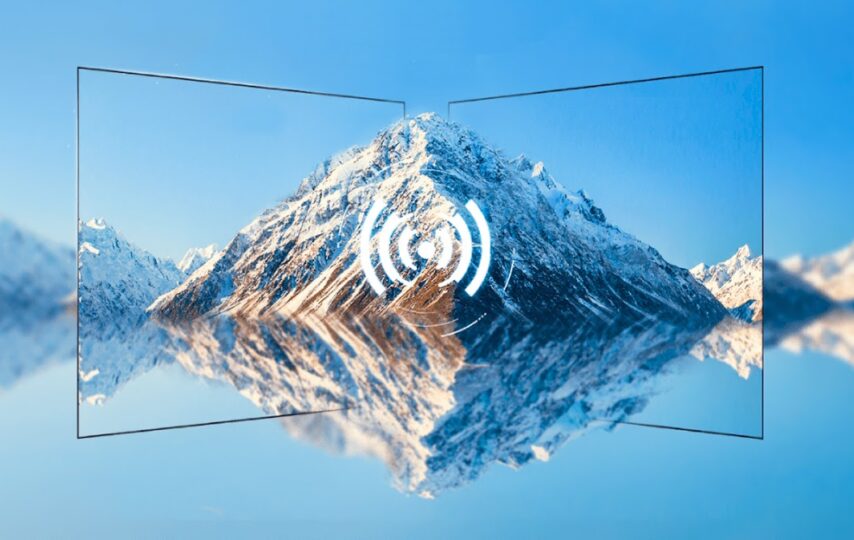We don’t always get a clear and straightforward comparison when determining which of the three is the best brand of video processors for led walls to choose. Many comparisons contain too much information and complicated details that are better suited for instruction manuals. It can be difficult to compare features with one another in such cases.
We have decided to offer you the necessary information to help you make a decision. We will compare all the factors related to installation and usage and provide you with a guide to the most important differences in specifications.
When selecting the best brand of controllers for LED displays that matches your needs, we’ll start with the basics and cover the essential factors to consider, then move on to more specific details that can help clarify any uncertainties.
Why is it so important to compare between these control systems?
Whether or not you have experience working with NovaStar, ColorLight, or Linsn, it is always crucial to develop your ability to differentiate based on your needs and, more importantly, to consider the overall context of the installation of LED video walls. What if you are working on a proposal for a concert in a stadium yet… Only text and symbols are rendered by the video renderer that was chosen to be integrated with the screens. What if the receiving card cannot handle the necessary bits? Or does it not support outdoor event temperatures?
If you don’t understand the variations and adaptability of each brand according to their specs, instructions, pricing, software, and other factors, you could overlook a lot of information.
The two main differences you need to understand before comparing video processors
Most likely, you already have a rudimentary understanding of the two key characteristics that set these two systems apart. However, let’s review them to ensure we have covered everything.
The Asynchronous LED System
Asynchronous LED control systems function essentially the same way as flash drive media players. As soon as you store the material on the receiving card, people should be able to view the previously changed versions of it. Regardless of whether the computer is turned on or experiencing problems, the photographs will be seen on the screen once the card has the information.
What does that procedure entail? The information will be delivered to the receiving card and displayed on the screen after you have worked with it on the computer. When billboards are installed, for instance, this kind of technology is ideal because the information is repeated and the reproduction time is not as important.

Synchronous LED System
The synchronous control system is entirely connected to the computer, as opposed to the asynchronous one. Due to complete synchronization with other devices, if the computer shuts down or experiences a malfunction, the LED screen will as well. This means that in order for it to perform, the computer monitor’s 60 frames per second, which utilize point-by-point mapping, must be monitored and managed.
This type of asynchronous system works considerably better for live concerts, conferences, television stations, and all other forms of high-demand events since it is less independent and reproduces content primarily in real time.

These are the main differences that you should know:
- Reproduction in real time: The asynchronous control system, according to its function, cannot be duplicated in real time, whereas the synchronous control system can.
- The asynchronous system can use USB cables, 4G, WiFi, network cables, and other types of connectivity depending on connectivity, but the synchronous system only uses network cables, which advantages the asynchronous system’s installation distance.
- The synchronous system may duplicate a wider variety of images and multimedia content, including full films and higher information load, whereas the asynchronous system primarily reproduces animations, text, symbols, and a variety of special characters.
We have discussed the synchronous and asynchronous systems that LED display panel controllers can use in the preceding paragraphs. Now, we will go into more detail about each brand so you can make an informed decision based on your requirements.
Statistics that set each brand apart you might find interesting
Brand: NovaStar
- Market Share: 70%
- Business Scope: Synchronous and asynchronous control system with their respective software
- Services: 24/7 unlimited customer service
Easy to reach tech support
Wide quantity of manuals and guidance material
Professional Training access - Warranty: 3 years in all products
- Price: 20% higher prices
Brand: ColorLight
- Market Share: 25%
- Business Scope: Focus on synchronous and asynchronous control system, software and algorithms
- Services: Worldwide tech support, manuals and guidance materials
- Warranty: 3 to 5 years depending on the product
- Price: from 15 to 20% lower
Brand: Linsn
- Market Share: 20%
- Business Scope: Focus on synchronous control system
- Service: Worldwide tech support, certifications, manuals and guidance material
- Warranty: 3 years and 5% for spare parts in all products
- Price: 20% in between
NovaStar VS Colorlight
It’s hard not to compare the two top-selling brands and to see what they have to offer. Using this information can help you decide which one would suit you and your event’s needs the best. Here are some of the highlights when comparing NovaStar and ColorLight:
NovaStar LED controller MCTRL300
The smallest LED controller from NovaStar’s Standard Line, the MCTRL300, allows LED displays to be set up in a remarkably brief amount of time. The sending card is housed in a sturdy metal enclosure and comes with a DVI input. In addition, the controller contains a light sensor connection that may be used to connect the NovaStar NS060 (101612) for automatic brightness monitoring.
The NovaStar MCTRL300 is well-suited to small to medium-sized fixed LED walls.
Hardware Specs
- 1x DVI input;
- 2x LED-Out (RJ45) output
Additional features:
- Light sensor connection
- Cascade through UART
- USB control of the controller
General requirements:
- AC-100-240V, 50/60Hz power supply voltage Power consumption: 20 Watt
- Dimensions (WxDxH): 204 x 106 x 48 mm
- 1 kg in weight
ColorLight LED S20 Sender
Despite not being the same size, ColorLight’s LED S20 sender might be the brand’s counterpart of NovaStar’s MCTRL300 given its features, style, and commercial success.
S20 has a very powerful LED video processor capacity. Supporting the input of DP1.2 and HDMI2.0, seamlessly switching between signal sources. A single unit features a loading capacity of up to 8.85 million pixels, with a maximum width or height of 8192 pixels, while a single ethernet port supports a loading width or height of 4096 pixels, and the controller supports signal inputs of 4092×2160@60Hz resolution.
Thus, S20 allows users to configure ultra-long, ultra-high and ultra-large screens. It can not only effectively ensure the stability of screens, but also provide high-quality image display and flexible screen control.
Hardware specs
- 1XDP 1.2, 1xHDMI 2.0 Input
- 4092×2160@60Hz Output
Additional features
- Light sensor connection
- Cascade through UART
- USB control of the controller

NovaStar VS Lins – All in one controllers
When it comes to high-quality technological products, it’s hard not to take notice of those that claim to have everything you need in one unit. That’s why we’ve decided to feature the exceptional all-in-ones from Linsn and NovaStar in our post. Here are some of their advantages:
NovaStar VX1000
The latest all-in-one video controller from the Chinese technology giant offers integration between the video processor and the video control, in a single console. The design is also simple and simple, for greater comfort in the installation.
Despite its minimalist design, this machine is capable of supporting any occasion, from moderately demanding control systems to the most demanding.
Hardware Specs
- 10 Ethernet output ports with 6.5 Million pixels of loading capacity
- A single unit outputs a max width of 10.240 pixels, with a max height of 8.192 pixels
- 4K x 1K@60Hz high resolution input, 4K x 1K point to point display
- 3 x 4K layers, free scaling for each one
- 3 working modes: video controller, fiber converter and ByPass
Additional Features
- Support for redundant input source, system configuration, ethernet ports and devices for better stability
- Ultra low one frame latency
- 10 customizable presets
- Long distance optical transmission
Linsn X102/104 3-in-1
Linsn’s X102/104 is a low-cost all-in-one video processor designed to suit the demands of small engineering screens. This product combines several capabilities, including U disk playback, a transmitting card, and a video processor. A single device may hold up to 1.3/2.6 million pixels, a bandwidth of 3840 pixels, and a resolution of 1920 pixels.
Hardware Specs
- Network ports output, with a maximum load of 1.3 million pixels/4 network ports output, with a maximum load of 2.6 million pixels
- Maximum width of 3840 pixels and a maximum height of 1920 pixels
- U disk program playback
- Video source hot backup and no-signal black screen function
- 2 hDMI 1.4, 1DVI, 1 VGA, 1 CVBS.
Additional Features
- Working voltage: AC 90-264VAC, 50/60Hz
- Rated power consumption: 15W
- Working Environment
- Temperature: -20℃ ~ 70℃
- Humidity: 0%RH ~ 95%RH

ColorLight VS Linsn
This section is the final not because it is less important. Instead, we are saving the best for last. Do you know what mailboxes are? They serve as direct controllers for the LED screens and are just as crucial to the control system as the display panels.
The most popular shipping boxes from ColorLight and Linsn are listed below:
ColorLight SF6
Each box can be multifunctional and manage several configuration modes simultaneously, from multiple screens at the same time, giving us a view and automatic access to the combinations and independent activities of each.
Hardware specs
- Input 1xDVI x LOOP, 1xHDMI1.4 x LOOP
- Input Resolution 1920×1200@60Hz
- Output 6x1G Ethernet
- Loading capacity 2.3 Million pixels
- Flexible output Up to 4096 pixels in width, up to 2560 pixels in height
Additional Features
- Dual inputs with LOOP
- Arbitrary splicing amongst 6 Gigabits Ethernet outputs
- Ultra-long transmission, ethernet and fiber
- USB and LAN port control
Linsn TS 852
This card has the same functionality as the brand’s TS802 model, which is predicated on providing full color, single color, and double color to images displayed on LED screens; the only difference is that voice transmission and cascade functions have been added to the TS852 model.
Hardware specs
- Loading capacity from 180Hz up to 300 Hz
- Pixel by Pixel correction
- Double network cables can switch
- Integrates voice transmission Double 24 bits and 64 KHZ hi-fi digital analogy
- Model 701: 1280*1024
- Model 702: 2048*640
- Two cards cascaded: 2048*1152.
- Single network cable supports the max pixels: model 701: 1024*640, 1280*512
- Model 702: 1600*400, 2048*320
Additional Features
- 5V, 2A
- One Linsn TS802D transmitting card and a power supply are housed in the outer box SB-8.
- There is room for an industrial PC, complete with a dedicated motherboard and hard disk.
- With an additional mouse.
- Brightness control with 16 levels.
- Dimensions: 40.5cm x 20.7cm x 5.9cm
Conclusion
In terms of LED control systems, it is difficult to choose one brand. As you’ve likely already observed, each brand has advantages and distinctions that cater to various client requirements. This is nothing new; on the market, each and every manufacturer, no matter how large or small, pursues a unique vision.
It is easy to deduce that NovaStar has advantages and characteristics that make it more desirable in its industry, not only because of the quality of its products, but also because of the multitude of services and support it provides to its customers. LED Market is a licensed agent of NovaStar and other brands related to LED walls in the country.
There are several advantages to purchasing Novastar::
- Technical support
- Easy installation
- Immediate shipping, always in stock
- Financing program availability
- 24 months warranty in all products and parts
- USA Based
- 4K turn-key packages







